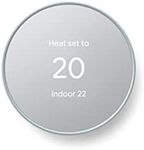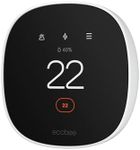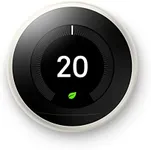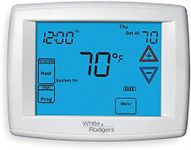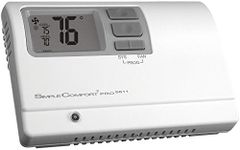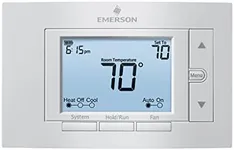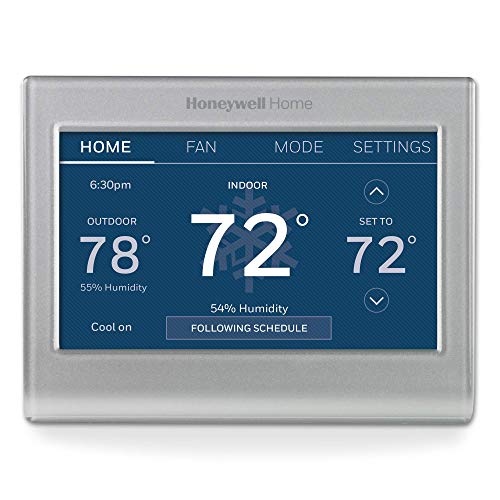Buying Guide for the Best Auto Changeover Thermostats
Choosing the right auto-changeover thermostat can make a big difference in your comfort and energy efficiency at home. These thermostats automatically switch between heating and cooling modes, so you don’t have to manually adjust them as the seasons change or as temperatures fluctuate throughout the day. When shopping for an auto-changeover thermostat, it’s important to understand the key features and specifications that will best match your lifestyle, your home’s HVAC system, and your preferences for convenience and control.Compatibility with HVAC SystemCompatibility refers to whether the thermostat will work with your existing heating and cooling system. Some thermostats are designed for single-stage systems, while others support multi-stage or heat pump systems. It’s important because an incompatible thermostat may not control your system properly or could even cause damage. To navigate this, check your HVAC system type—whether it’s gas, electric, oil, heat pump, or multi-stage—and look for thermostats that specifically mention support for your setup. If you’re unsure, consult your HVAC manual or a professional. Picking the right compatibility ensures smooth operation and avoids installation headaches.
Auto-Changeover FunctionThe auto-changeover function is what allows the thermostat to automatically switch between heating and cooling as needed. This is important for maintaining a consistent indoor temperature without manual intervention, especially in climates where temperatures can swing between hot and cold in a single day. Some thermostats allow you to set a temperature range, and the system will switch modes to keep you within that range. When choosing, consider how much temperature fluctuation you experience and whether you want the convenience of not having to manually switch modes. If you live in a region with unpredictable weather, this feature is especially valuable.
Programming and SchedulingProgramming and scheduling refer to the ability to set different temperatures for different times of day or days of the week. This is important for energy savings and comfort, as you can have the system adjust automatically when you’re home, away, or asleep. Some thermostats offer basic 5-2 day programming (weekdays and weekends), while others allow for 7-day or even more detailed schedules. If your routine is predictable, a simple schedule may suffice. If your schedule varies, look for more flexible programming options. The right choice depends on how much control you want over your home’s temperature throughout the week.
User Interface and ControlsThe user interface includes the display, buttons, and how you interact with the thermostat. This is important because a clear, easy-to-use interface makes it simple to adjust settings and check temperatures. Some thermostats have touchscreens, while others use physical buttons or dials. Displays can range from basic to full-color with extra information. If you prefer simplicity, look for a straightforward interface. If you like more information or advanced features, a more detailed display might be better. Consider who will be using the thermostat and choose one that everyone in your household can operate comfortably.
Remote Access and Smart FeaturesRemote access means you can control your thermostat from your smartphone, tablet, or computer, often through a dedicated app. Smart features may include learning your schedule, integrating with voice assistants, or providing energy usage reports. These are important for convenience and optimizing energy use. If you travel often, have an unpredictable schedule, or enjoy using smart home technology, remote access and smart features can be very helpful. If you prefer a more traditional approach, you may not need these extras. Think about how much you value convenience and connectivity when making your choice.
Installation RequirementsInstallation requirements refer to how easy it is to set up the thermostat and whether you need special wiring or professional help. Some thermostats are designed for easy DIY installation, while others may require a C-wire (common wire) or other specific wiring. This is important because improper installation can lead to malfunction or even damage to your HVAC system. Before buying, check what kind of wiring you have and whether the thermostat includes clear instructions or support. If you’re comfortable with basic home projects, a DIY-friendly model may be fine. Otherwise, consider one that offers professional installation support.

